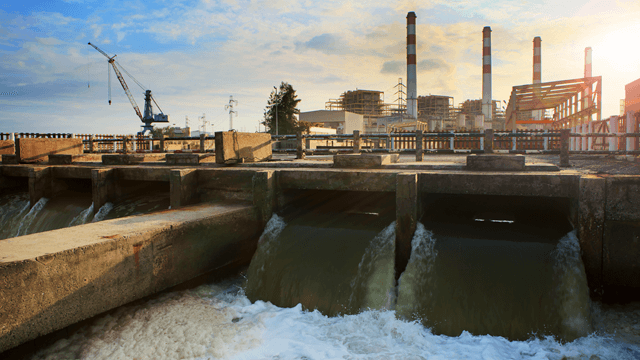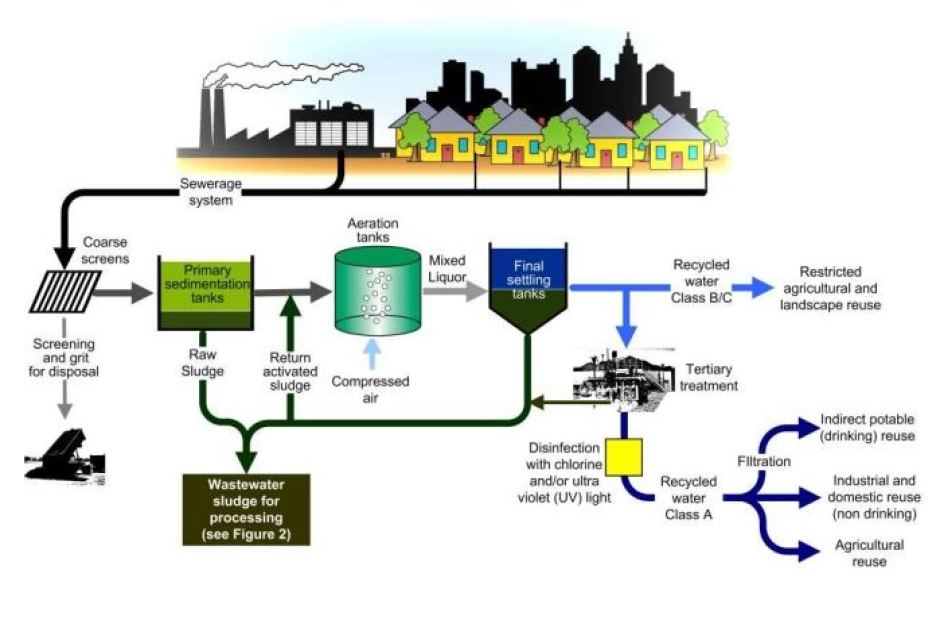Key Methods in Industrial Waste Water Treatment Procedures
The treatment of industrial wastewater is an essential aspect of environmental administration, including an array of strategies made to mitigate the impact of pollutants. Improvements in modern technologies such as membrane layer filtration and advanced oxidation processes offer innovative services for improving treatment effectiveness.
Physical Treatment Techniques
Exactly how successfully can physical therapy techniques attend to the intricacies of commercial wastewater? Physical therapy techniques play an essential function in the initial stages of wastewater administration, focusing primarily on the removal of solids and huge particulates. Strategies such as filtering, flotation, and sedimentation are necessary for lowering the focus of suspended solids, thereby enhancing the performance of subsequent treatment procedures.
Sedimentation involves the gravitational settling of solids, enabling for the separation of much heavier materials from the wastewater. This technique is particularly efficient in clarifying water prior to organic or chemical therapies.
In addition, flotation approaches, which use air bubbles to raise suspended solids to the surface area for elimination, work in dealing with wastewater with high concentrations of fats, oils, and oils. Overall, physical treatment approaches function as an essential very first action in the comprehensive administration of commercial wastewater, guaranteeing that the lots on succeeding treatment stages is decreased and improving total treatment effectiveness.
Chemical Therapy Techniques
While physical therapy methods prepared for efficient wastewater management, chemical therapy techniques are essential for resolving the much more complex pollutants frequently located in industrial effluents. These approaches utilize numerous chemical agents to precipitate, counteract, or oxidize hazardous materials, guaranteeing an extra extensive elimination of contaminants.
One usual method is coagulation and flocculation, where chemical coagulants such as light weight aluminum sulfate or ferric chloride are included in promote the gathering of put on hold particles. This procedure boosts solid-liquid separation, minimizing turbidity and boosting water quality. Furthermore, neutralization procedures are employed to change the pH of wastewater, utilizing bases or acids to neutralize acidic or alkaline streams, respectively.
Oxidation-reduction responses play a crucial role in degrading natural impurities and pathogens. Chemical oxidants like ozone, hydrogen, or chlorine peroxide are made use of to break down complicated natural substances, making them much less harmful or much more naturally degradable. Advanced oxidation processes (AOPs) combine multiple oxidation techniques to enhance contaminant elimination effectiveness.
Organic Treatment Processes
The effectiveness of wastewater treatment is considerably improved by biological treatment processes, which harness the natural metabolic tasks of microbes to decompose natural issue and get rid of toxins. Industrial Waste Water Treatment. These procedures mostly include anaerobic and cardiovascular digestion, each tailored for details sorts of wastewater
Cardio therapy processes utilize oxygen to support microbial development, advertising the failure of natural contaminants into co2 and water. Typical techniques include turned on sludge systems, where oygenation tanks facilitate the blending of wastewater with bacteria, and trickling filters, which urge biofilm growth on media surfaces.
Conversely, anaerobic therapy processes occur in the lack of oxygen, using anaerobic microorganisms to disintegrate organic issue, leading to biogas production, an eco-friendly energy resource. Anaerobic digesters are typically employed in commercial settings for this objective, efficiently reducing the quantity of sludge while generating useful biogas.
The selection of an organic treatment approach depends on wastewater attributes, treatment objectives, and regulatory requirements. The integration of biological procedures in wastewater treatment not just boosts toxin elimination efficiency yet also promotes sustainability by decreasing chemical usage and supporting source healing.
Advanced Oxidation Processes

Typical AOP techniques include Fenton's reagent, photocatalysis, and ozonation. Fenton's reagent, a combination of hydrogen peroxide and ferrous iron, militarizes the development of hydroxyl radicals, making it effective for treating wastewater consisting of phenolic substances and various other recalcitrant compounds.
AOPs use numerous advantages, consisting of lowered sludge production and the ability to treat wastewater with high focus of natural toxins. However, the implementation of AOPs needs cautious factor to consider of functional criteria and cost-effectiveness, ensuring that these advanced techniques are properly incorporated right into existing wastewater from this source therapy systems.
Membrane Layer Purification Technologies

Microfiltration is effective for eliminating put on hold bacteria and solids, while ultrafiltration targets smaller organic particles and infections. Nanofiltration bridges the gap in between ultrafiltration and turn around osmosis, properly removing organic compounds and divalent ions. Reverse osmosis gives the highest degree of purification, used mainly for desalination and eliminating mono-valent ions.
Membrane technologies provide many advantages, consisting of reduced power usage contrasted to typical therapy approaches, modular layout for scalability, and the possibility for water healing and reuse. Obstacles such as membrane layer fouling and the requirement for routine maintenance must be resolved to ensure system effectiveness. Generally, membrane filtration modern technologies stand for a crucial element of contemporary commercial wastewater therapy techniques, promoting sustainability and source conservation in water management.
Conclusion
Finally, commercial wastewater treatment uses a varied array of strategies, consisting of physical, chemical, biological, and progressed techniques. Each method plays a vital duty in efficiently addressing numerous pollutants, enhancing water top quality, and promoting source sustainability. The combination of these strategies promotes a comprehensive therapy technique, making certain that industrial effluents fulfill regulative standards while lessening environmental influence. Continued improvements in these approaches will certainly even more boost the efficiency and efficiency of wastewater treatment processes in commercial settings.
The therapy of industrial wastewater is an important aspect of ecological monitoring, involving a variety of strategies made to reduce the effect of impurities.Just how effectively can physical treatment techniques attend to the intricacies of commercial wastewater?Advanced oxidation processes (AOPs) represent an advanced technique browse around here in commercial wastewater therapy, made to effectively deteriorate organic contaminants that are commonly immune to standard therapy approaches (Industrial Waste Water Treatment).In verdict, commercial wastewater therapy uses a varied selection of strategies, consisting of physical, chemical, organic, and progressed techniques. Proceeded improvements in these methods will certainly additionally enhance the effectiveness and efficiency of wastewater treatment processes in commercial setups